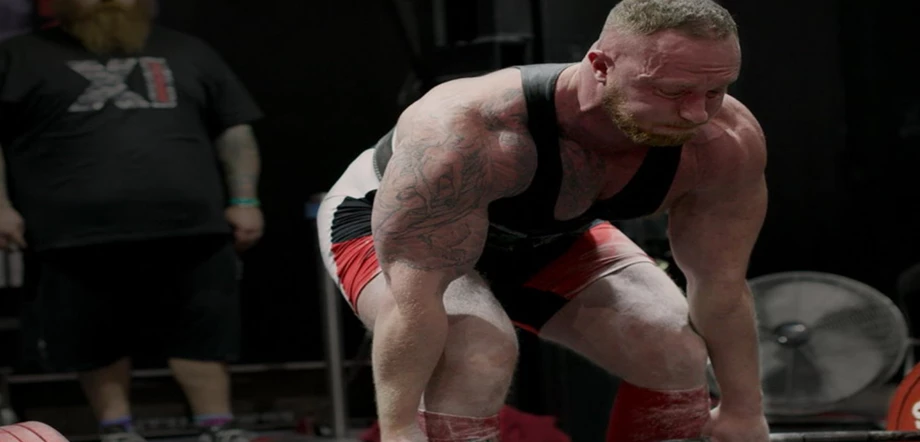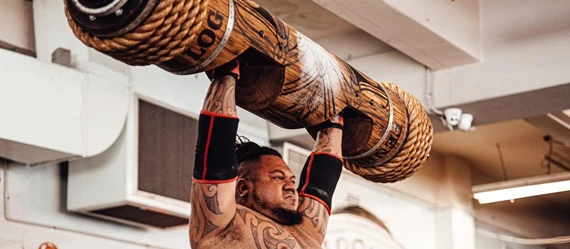
Introduction
My name is Sam Bollands. I’m 32 currently living in Sheffield. I have been powerlifting for 4 ½ years and I am the current all time u125kg British record holder with 1000kg total consisting of 400kg squat, 230kg bench and 372.5kg deadlift (however I recently did a unofficial mock meet when proraw was cancelled totalling 1015kg going 410-225-380).
I am coached by Sebastian Oreb aka Australian Strength Coach, who I have learned a lot from. I work full time as a UK Sales Manager for a security company, but I do offer my own online coaching services and try to give out as much free content and advice via my Instagram and YouTube to help budding strength athletes in their progression.
Deadlifting
I think one of the best feelings in life is hitting a personal best deadlift in competition whether it’s to take a win, record, placing or just the fact you’ve just deadlifted a weight you’ve never hit before - it’s a pretty epic feeling. If I could bottle that feeling and sell it I would be extremely rich. So when you are pulling a deadlift that is on its way up and is going to provide you with enough endorphins to keep you awake till the wee hours of the morning and your grip betrays you, it’s a pretty disheartening feeling and unfortunately it’s a feeling that I have gone through a few times in my short powerlifting career.
My grip strength was never particularly weak as I remember in my second official powerlifting competition that I’d done zero grip training for, I pulled 350kg to secure the win in the WPC European u110kg class and commented straight afterwards to a friend "I’ve got no idea how anybody can drop the bar when using a Texas deadlift bar as the knurling is so grippy"… Oh how wrong I was. In my very next competition I attempted 352.5kg and actually dropped it three quarters of the way up missing out on hitting a PB deadlift and PB total.
Improving Grip Strength
Once I realised that my grip was going to be my limiting factor for deadlifts, which was highly frustrating as my deadlift had been my strongest lift by a substantial margin, I spent a lot of time on the Internet searching for advice asking various lifters and posting in the usual strength training Facebook groups. Everybody that gave me advice had good intentions, but unfortunately the Internet is full of people who consider themselves experts but aren’t really qualified to be giving advice.
I decided to filter out the advice and look at people who had managed to improve their grip strength substantially and trial exercises they were recommending. I’d noticed that there’s people out there claiming to have incredibly strong grip for various other tests of grip strength, but could only hold onto 330kg deadlifts giving poor advice out.
This is when I realised that to improve my grip for deadlifting I needed to keep it as specific as possible to how I would be holding the bar when deadlifting. I quickly realised that exercises such as pinch grip and double overhand deadlifts had next to no carry over to deadlift grip strength.
First and foremost the best exercise to improve grip for deadlifts is actually deadlifting with an extended hold at the end of the set. Now for me, deadlifting with a weight heavy enough to test my grip enough to strengthen it involves pulling weights that would be very taxing and would ruin recovery for my other training sessions, so that isn’t really an option if I want to see optimal progression for squat, bench and deadlift at the same time. The best way around this is a high rack pull with a short enough range of motion that means picking it up won’t affect recovery using the same grip that you use when deadlifting from the floor and holding the weight for 10 seconds. Why 10 seconds? The longest period of time you should have to hold onto a deadlift when attempting a 1rm is 10 seconds, any longer than that and you won’t complete the rep – so 10 seconds I believe is the perfect period of time to do these holds.
This for me is the best option to improve grip strength whilst not impeding recovery, however for me when doing these rack pulls I can hold onto 420kg so holding that kind of weight every week is incredible harsh on the hands. A point to mention for the high rack pulls is to also experiment with bar positioning in your hands when doing this exercise, finding the sweet spot of where to place the barbell in your hand can make a big difference to your grip – this will differ from person to person depending on hand size etc but with this set up its easy to find what suits you quite quickly.
But to be honest I actually only implement that exercise about 12 weeks out from competition when I need to peak my grip strength, any further than 12 weeks out I do the exercise below – behind the leg double overhand thumbless holds with a barbell. Now this is an excellent exercise that will reveal where your weakness lies. It doesn’t require a lot of weight and can actually be quite humbling, I again would do 10 second holds on this exercise doing three sets before doing 3 sets of 10 double overhand thumbless shrugs with a lower weight. The reason for doing these holds and shrugs thumbless is to ensure the fingers are doing all the work when holding onto the barbell not the thumb so we want to target these specifically ensuring the right components are being strengthened – you will never drop a deadlift because you had weak thumbs.
Frequency
So how often should you train grip, how much volume should you do and how should you program it?
I believe training grip once a week is more than adequate either after deadlifting or on a separate day, when 12+ weeks out 3x 10 second holds of behind the leg thumbless holds followed by 3x 10 thumbless shrugs is enough volume (you’ll soon find that grip fatigues quickly and doing more than that is almost pointless) and to program keep it simple with progressive overload. Start with a weight that’s below your current threshold and add 2.5kg each week without going up in weight until you successfully complete all sets and if you fail two weeks in a row drop the weight back a little and build back up, simple.
12 weeks and less is slightly different, I like to choose a weight 20kg more than what I would like to pull in competition and aim to hold that from a high rack pull 2 weeks prior to competition day (the reason for two weeks is just in case you tear your hand with the attempt so it can heal before comp), I would then work backwards from that with the intention of adding 5/10kg each week on the high rack holds. So for example I wanted to pull 400kg so I held 420kg two weeks out meaning I started at 330kg in week one adding 10kg until week 10 for the 420 hold, after the high rack hold I’d also be doing the behind the leg holds and shrugs with the same volume and programming for 12+ weeks out then 1 week out I would drop weight keeping everything lighter whilst ensuring I’m on top of my hand care thoroughly through all of this period.
I hope this helps a few people out there that are struggling with their grip, as I mentioned previously, I know all too well the gutting feeling of dropping a deadlift.
Follow Sam
To follow Sam for more free training tips on grip strength and other multiple subjects, as well as info on his online coaching services follow him on his Instagram and YouTube channel.


